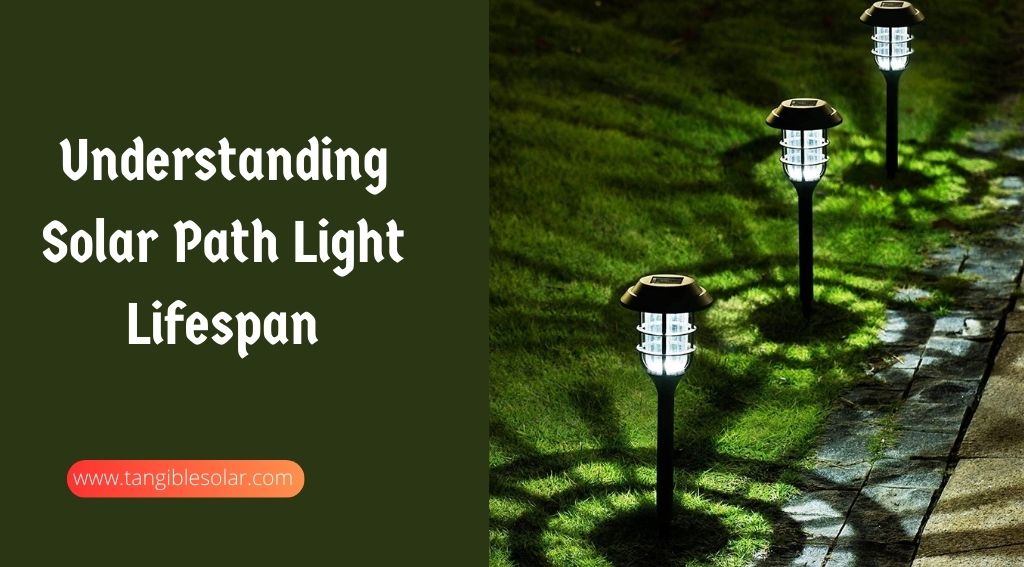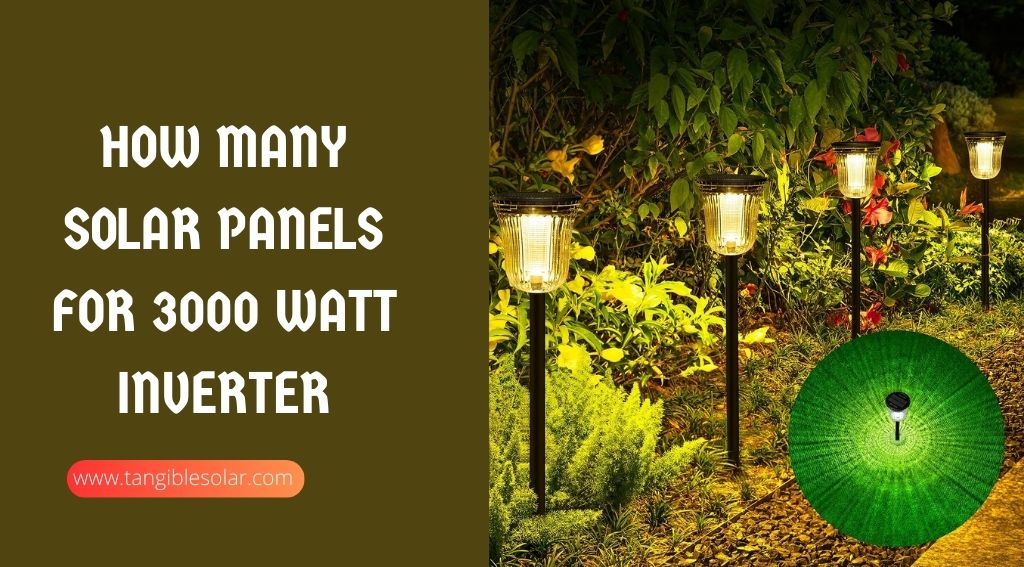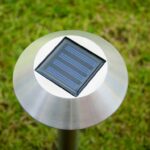How Long Do Solar Path Lights Last?
Solar path lights typically last for about 2–4 years before they need to be replaced. Solar path lights are a popular option for outdoor lighting due to their energy efficiency and ease of installation.
These lights collect energy from the sun during the day and use it to power their LED bulbs at night. While they offer numerous benefits, such as reducing your carbon footprint and providing additional safety and security to your outdoor areas, it’s essential to understand their lifespan.
In general, solar path lights have an average lifespan of 2-4 years, although some high-quality models can last up to 5 years or more. The longevity of these lights depends on various factors, including the quality of the materials used, the amount of sunlight they receive, and the overall maintenance and care provided.
Factors Affecting The Lifespan Of Solar Path Lights
Solar path lights are a popular and eco-friendly choice for illuminating pathways, gardens, and outdoor spaces. However, their longevity can vary depending on several factors. Understanding these factors can help you make an informed decision when purchasing solar path lights. Here are the key factors that can affect the lifespan of solar path lights:
Quality Of Components
The quality of components used in solar path lights plays a significant role in determining their lifespan. Opting for lights that are made with high-quality materials, such as durable casing and efficient solar panels, can ensure longevity. Components like sturdy wiring, rust-resistant screws, and weatherproof seals can also enhance durability.
Battery Capacity
The battery capacity of solar path lights impacts their lifespan directly. A higher battery capacity allows the lights to store more energy during the day, ensuring they can operate for an extended period at night. When selecting, look for models with larger battery capacities to maximize their lifespan. Investing in lights with replaceable batteries can also be beneficial, as you can easily replace old or worn-out batteries and prolong the overall lifespan of the lights.
Sunlight Exposure
The amount of sunlight that solar path lights receive has a big impact on how long they last. These lights need sufficient sunlight to charge their batteries efficiently. If your outdoor space has limited direct sunlight due to shaded areas or tall trees, the lights may not receive enough energy to operate optimally. It’s essential to position them in areas with the maximum sunlight exposure throughout the day to ensure they have enough power for extended nighttime use.
Climate Conditions
The climate conditions in your area can also impact the lifespan of solar path lights. Extreme weather conditions, such as heavy rain, snow, or intense heat, can potentially damage the lights or their components. Lights that are designed to withstand different climate conditions, including temperature fluctuations and water resistance, are more likely to have a longer lifespan. It’s crucial to choose solar path lights that are specifically built to withstand the climate challenges of your location.
By considering these essential factors, you can choose products that are built to last, providing you with reliable and sustainable outdoor lighting for years to come.
Understanding Solar Path Light Lifespan

When it comes to illuminating our outdoor spaces, solar path lights are a popular and eco-friendly choice. These lights harness the power of the sun to create a warm and inviting glow that adds beauty and safety to our pathways and gardens. However, like any other electrical device, it has a limited lifespan. Understanding the lifespan is important for homeowners who want to maximize their investment and keep their outdoor areas well-lit for years to come.
How to Restore Solar Light Panels
Average Lifespan Of Solar Path Lights
Solar path lights are designed to last for a certain number of hours, typically ranging from 8 to 10 hours, depending on the model and its specifications. On average, you can expect them to last up to 1-2 years before they start to show signs of deterioration or malfunction. However, with proper maintenance and care, you can extend their lifespan significantly.
Signs Of Deterioration Or Malfunction
As solar path lights age, several signs of deterioration or malfunction may become apparent. These signs serve as a clue that the lights may need attention or replacement. Some common signs to look out for include:
- Dim or flickering light output
- Shortened illumination duration
- Visible physical damage
- Corrosion or rust on the surface
- Loose connections or wires
If you notice any of these signs, it may be time to replace or repair them to ensure that your outdoor areas remain well-lit and safe.
Maintenance Tips To Extend Lifespan
Proper maintenance is key to maximizing the lifespan of solar path lights. By following these simple tips, you can keep your lights shining brightly for years:
- Regularly clean the solar panels to remove any dirt or debris that may block sunlight.
- Check and tighten any loose connections or wires to prevent malfunctions.
- Replace the rechargeable batteries every 1-2 years to maintain optimal performance.
- Inspect the lights periodically for any physical damage and replace any broken or worn-out parts.
- During the winter months or extended periods of low sunlight, store the lights indoors to protect them from harsh weather conditions.
By incorporating these maintenance practices into your routine, you can ensure that you continue to enhance your outdoor spaces for a longer period.
Maximizing Efficiency With Solar Path Lights

Solar path lights are an excellent choice for adding a touch of elegance and functionality to your outdoor spaces. Not only do they provide a beautiful ambient light, but they also help to increase the safety and security of your property. To make the most of your solar path lights, it is important to maximize their efficiency. In this article, we will explore different ways to do just that, from choosing the right lights to upgrading to energy-efficient LED bulbs.
Choosing The Right Solar Path Lights
When it comes to selecting solar path lights, there are a few factors to consider to ensure maximum efficiency. Here are some key points to keep in mind:
- Quality: Invest in high quality to guarantee longevity and optimal performance. Look for lights with durable construction that can withstand various weather conditions.
- Brightness: Consider the desired brightness level of your lights. Some path lights offer adjustable settings, allowing you to customize the brightness to suit your needs.
- Battery Capacity: Check the battery capacity of the lights. Opt for higher-capacity batteries, as they will provide longer lighting hours, especially during cloudy days.
- Style and Design: Select path lights that complement your outdoor aesthetics. There are various designs available, from classic lantern-style to modern and sleek options.
Positioning For Maximum Sunlight
The placement of your solar path lights is crucial to ensuring optimal exposure to sunlight, which in turn enhances their efficiency. Here are some tips to position your lights for maximum sunlight:
- Clear Obstacles: Ensure that no trees, bushes, or other items that might cast shadows are blocking the lights. Remove any debris that may accumulate around the lights and block the solar panels.
- South-Facing: Position the lights in a south-facing direction, as this maximizes exposure to direct sunlight throughout the day.
- Elevation: If possible, elevate your lights to allow for better sun exposure, especially in areas with tall vegetation or structures.
Regular Cleaning And Maintenance
To keep your solar path lights operating efficiently, regular cleaning and maintenance are essential. Here are some maintenance tips to follow:
- Clean Solar Panels: Wipe the solar panels with a soft cloth or sponge regularly to remove any dirt, dust, or debris that may accumulate over time.
- Replace Faulty Components: If you notice any faulty or damaged components in your lights, such as cracked solar panels or burned-out bulbs, make sure to replace them promptly. This will ensure optimal performance.
- Check Battery Life: Periodically check the battery life of your lights. If the lighting hours seem to have significantly decreased, it may be time to replace the batteries.
Upgrading To Energy-efficient LED bulbs
An effective way to enhance your efficiency is by upgrading to energy-efficient LED bulbs. LED bulbs consume less energy and have a longer lifespan compared to traditional incandescent bulbs. They also offer brighter and more focused illumination, providing enhanced visibility on your path. Additionally, LED bulbs are environmentally friendly, as they produce less heat and contain no harmful substances such as mercury.
Why Do My Solar Lights Turn Off At Night
By implementing these strategies when using them, you can maximize their efficiency, ensuring they provide beautiful and functional lighting for your outdoor spaces for years to come.
Sustainability And Environmental Impact
In our efforts to create a more sustainable future, it’s crucial to consider the environmental impact of the choices we make. Solar path lights offer an eco-friendly alternative to traditional lighting options, as they harness the power of the sun to illuminate your outdoor spaces. Let’s explore the sustainability and environmental benefits of solar path lights.
Solar Power And Renewable Energy
Solar path lights operate using solar power, which is a form of renewable energy. Rather than relying on electricity from the grid, these lights have small solar panels that absorb sunlight during the day, converting it into electricity to charge the built-in batteries. This means they don’t require any additional energy sources and have zero reliance on non-renewable resources like coal or natural gas.
Benefits Of Solar Path Lights
There are numerous benefits to using solar path lights, both for your wallet and the environment:
- Eco-friendly: these are eco-friendly lighting options, as they produce zero greenhouse gas emissions and help to reduce our overall carbon footprint.
- Energy-efficient: use energy-saving LED bulbs that consume less power than traditional incandescent bulbs. This helps to further reduce energy consumption.
- Cost-effective: Once installed, operate without any ongoing electricity costs. They are solar-powered, which makes them a long-term, affordable lighting option.
- Low maintenance: this requires minimal maintenance. With no wiring or electrical connections, you don’t need to worry about changing batteries or dealing with complicated installations.
- Enhances safety: provide a soft and ambient glow that helps illuminate pathways, making them safer to navigate at night.
Proper Disposal Of Old Solar Path Lights
Just like any other electronic device, it has a lifespan. When it comes to disposing of old or non-functional items, it’s essential to follow proper disposal guidelines to minimize their environmental impact. Here are some tips for disposing of old things responsibly:
- Check local recycling guidelines: Research your local recycling facilities or electronic recycling programs that accept solar path lights. Many municipalities have collection points specifically for electronic waste.
- Remove and recycle batteries separately. If you contain replaceable batteries, remove them before recycling. Many battery recycling programs are available to ensure safe disposal.
- Donate or repurpose: If you are still in working condition but simply want to upgrade or change the design, consider donating them or repurposing them for other decorative purposes.
Remember:
By opting for solar path lights and properly disposing of old ones, you contribute to a more sustainable and environmentally friendly future.
Frequently Asked Questions: How Long Do Solar Path Lights Last?
Do solar landscape lights wear out?
Yes, solar landscape lights can wear out over time due to factors like battery degradation and weather exposure.
Why do solar path lights stop working?
Solar path lights may stop working due to several reasons, such as faulty batteries, damaged solar panels, or poor connectivity. Excessive dirt or debris on the panel can also hinder their performance. Regular maintenance, like cleaning the solar panels and replacing worn-out batteries, can help keep them working efficiently.
Are solar pathway lights worth it?
Solar pathway lights are definitely worth it. They are cost-effective, easy to install, and environmentally friendly. These lights use the sun’s energy to power themselves, reducing energy bills and carbon emissions. Plus, they provide safety and enhance the beauty of your outdoor spaces at night.
How Can I Make My Solar Lights Stay On Longer?
To make your solar lights stay on longer, try these tips: 1. Place them in direct sunlight for at least 8 hours daily. 2. Keep the solar panels clean from dirt and debris. 3. Replace old batteries with fresh ones regularly.
4. Limit nearby sources of light that may interfere with the sensors. 5. Adjust the light settings to a lower brightness level.
Conclusion
To sum up, solar path lights are a long-lasting and energy-efficient lighting option for outdoor spaces. With their durable construction and low maintenance requirements, they can provide illumination for many years. By choosing high-quality lights and properly maintaining them, you can ensure their longevity.
So, consider investing to enhance the beauty and safety of your outdoor environment while also reducing your carbon footprint.




